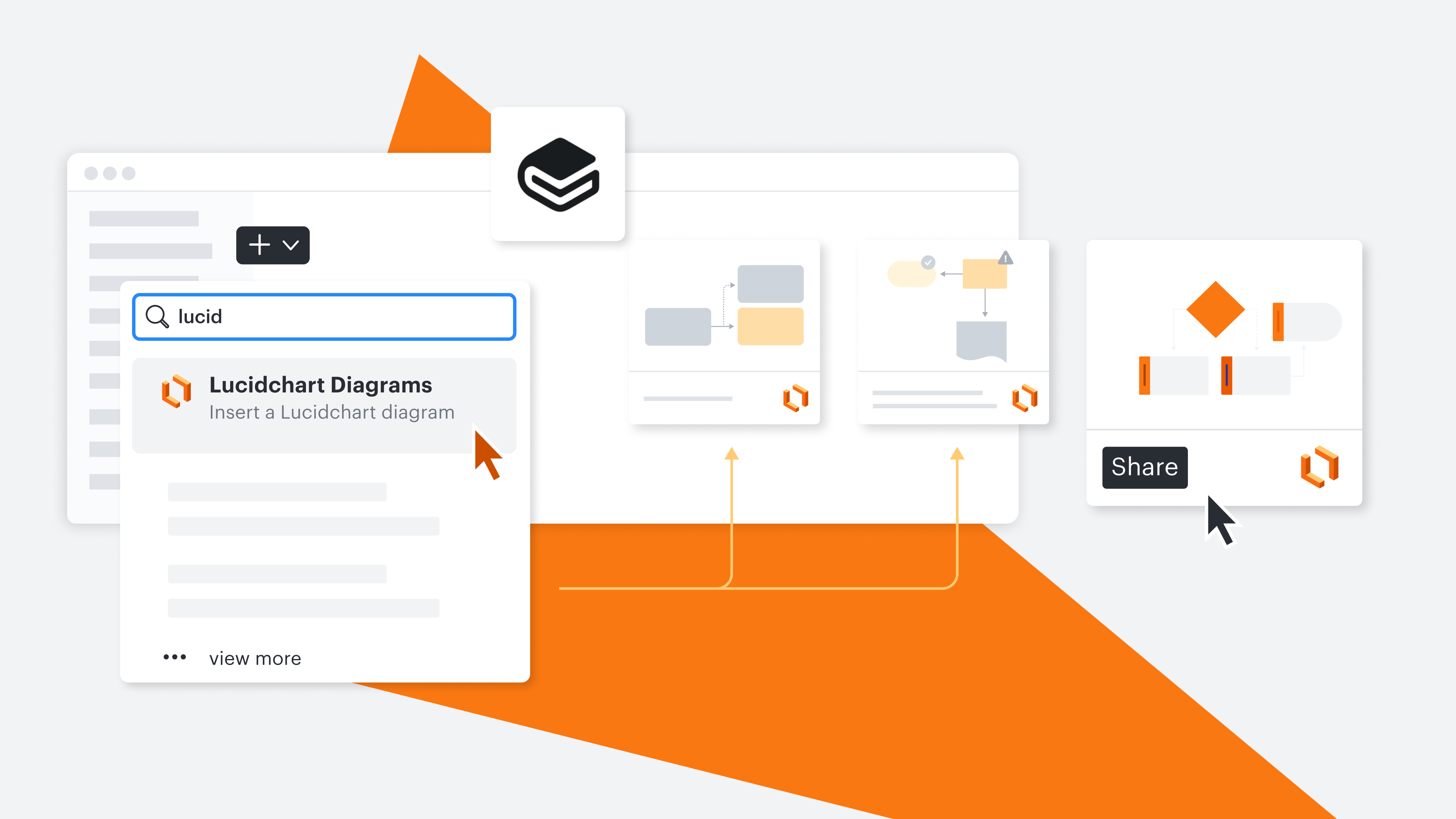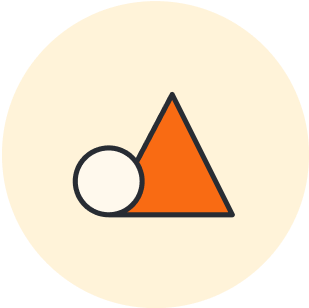
Leveraging GitBook: A collaborative approach to visual diagramming and technical knowledge management
Addison Schultz
Reading time: about 3 min
Topics:
Working efficiently as a company starts with efficiency within your team. And modern product teams increasingly do that by streamlining processes and eliminating unnecessary tasks.
But how do teams keep track of these improved processes and new workflows?
With a knowledge management tool like GitBook, you can bridge the gap between complex, technical concepts and collaborative teamwork. Plus, it offers powerful integrations with intelligent diagramming apps, such as Lucidchart—perfect for documenting processes. So you can keep your whole team on the same page and improve productivity.
Simplify the complex with visual diagrams
The best product teams use a centralized platform to share their knowledge. But keeping everyone up to speed is tough.
That’s where visual elements come in. Whether it’s a flowchart explaining a complex process or an architecture diagram showing system components, visuals are key to helping teams simplify the complex in their technical knowledge base.
The best part? In GitBook, those diagrams are always up to date. Collaborators can easily insert charts and other embedded diagrams, such as Lucidchart diagrams, into GitBook pages directly from the in-app editor. Editors can easily contribute to and review visual representations, so everyone can offer input or ask a question if something isn’t clear. As soon as someone updates the visual, GitBook updates too, so no matter how complex your technical system gets, your documentation will remain a valuable, live resource for the entire team.
Great communication = great collaboration
Effective communication is at the core of successful collaboration. That’s why teams need more than the traditional feature set of a documentation tool.
With GitBook, teams can create living documentation where everyone can contribute.
Users can comment, suggest changes, and provide feedback directly—either on more traditional elements or on the visual representations.
Plus, with real-time collaboration, team members can work together seamlessly wherever they are in the world. And because every page—and the visual diagrams on them—is constantly changing and updating, everyone is encouraged to take part in a continuous dialogue.
And that collaborative approach doesn’t just mean better communication. It also enriches the depth of technical understanding across the whole team.
Improve problem-solving
When faced with challenges, teams can leverage GitBook’s integrations with various visual diagramming tools to quickly create and share visual representations of the problem at hand. Flowcharts, mind maps, and decision trees become interactive components within documentation, allowing for a more in-depth exploration of potential solutions.
The ability to version control diagrams through git ensures that teams can track changes and iterations during the problem-solving process. GitBook becomes a central hub where team members can collectively brainstorm, analyze, and strategize around visual representations of complex technical issues. This accelerates the problem-solving cycle, leading to a more efficient and collaborative working environment.
Wrapping up
By simplifying complexity and communication teams encounter in their day-to-day, GitBook empowers teams to maintain a cohesive and evolving repository of technical knowledge. As collaboration remains a key driver of innovation, the link between GitBook and visual diagramming becomes a necessity for teams striving to thrive in today's interconnected and fast-paced technical environments.

Improve your documentation now by connecting GitBook with Lucid.
ConnectAbout the author

Addison Schultz is a web developer and designer working and living in Amsterdam, NL. Working the last 6 years on collaborative tooling, he’s worked with some of the world’s leading design and development companies, providing product teams with advice and industry advice on how teams can build better products, faster.
About Lucidchart
Lucidchart, a cloud-based intelligent diagramming application, is a core component of Lucid Software's Visual Collaboration Suite. This intuitive, cloud-based solution empowers teams to collaborate in real-time to build flowcharts, mockups, UML diagrams, customer journey maps, and more. Lucidchart propels teams forward to build the future faster. Lucid is proud to serve top businesses around the world, including customers such as Google, GE, and NBC Universal, and 99% of the Fortune 500. Lucid partners with industry leaders, including Google, Atlassian, and Microsoft. Since its founding, Lucid has received numerous awards for its products, business, and workplace culture. For more information, visit lucidchart.com.
